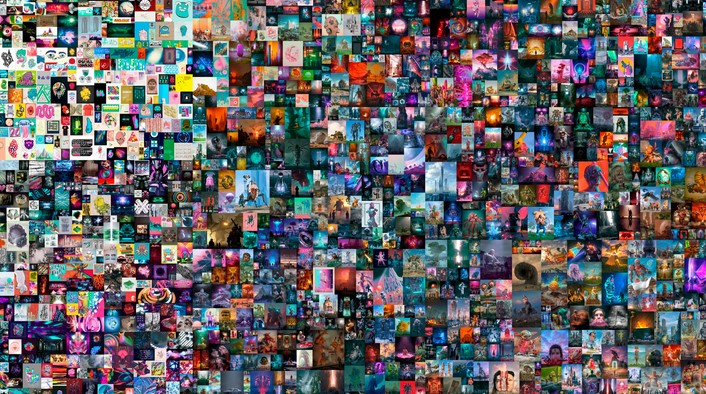
Etika, born Desmond Amofah, was a beloved figure in the world of YouTube gaming content, known for his larger-than-life personality, hilarious reactions, and unforgettable moments in the gaming community. His vibrant energy and charisma helped him quickly rise to prominence, earning him a dedicated following of fans who adored his genuine passion for video games and pop culture. Tragically, Etika’s life and career were cut short in 2019, leaving a void in the hearts of his fans and the broader YouTube gaming scene. In this article, we remember Etika: Remembering a YouTube gaming sensation, exploring his rise to fame, the unique qualities that made him a standout figure, and the lasting impact he left on the gaming community.
The Rise of Etika: From Humble Beginnings to Internet Stardom
Early Life and Entry into YouTube
Etika’s journey into the YouTube and gaming world began with his passion for both video games and the wider pop culture landscape. Born on May 12, 1992, in Brooklyn, New York, Desmond Amofah was a man of many interests. His love for gaming began at a young age, with popular franchises like Super Smash Bros. and The Legend of Zelda shaping much of his early childhood experiences. He would eventually go on to share his enthusiasm with the world through YouTube.
Etika initially started his YouTube channel, “Etika World Network,” as a platform to share his commentary, reaction videos, and gaming content. His distinct, high-energy style quickly became a defining feature of his channel. Fans flocked to his streams and videos for his unfiltered enthusiasm and his comedic, yet passionate takes on various gaming events, trailers, and news. His reactions, especially to major gaming announcements like the release of new Super Smash Bros. characters, became iconic, earning him the love and admiration of many.
Building a Community: The Etika Effect
Etika’s online presence was characterized by an undeniable connection to his community. He made a point to engage with his fans, creating a strong sense of loyalty and camaraderie. Whether it was through regular live streams, interactions on social media, or participating in fan events, Etika’s fans—known as the “JoyCon Boys”—were more than just viewers; they were a part of his journey. The “JoyCon Boys” name, which referred to the controllers used in the Super Smash Bros. series, became a symbol of the inclusive, welcoming environment Etika fostered within his community.
His fans also rallied around his unique sense of humor and outrageous reactions. Etika was a master of unpredictability, often pulling off hilarious, over-the-top reactions to gaming news. His laugh, which became iconic in its own right, was a hallmark of his videos. These moments of pure, unfiltered joy and excitement were what set him apart in the crowded gaming content creator space, allowing him to forge an unbreakable bond with his audience.
Etika’s Impact on the Gaming Community and Beyond
Breaking Boundaries: An Influencer Who Went Beyond Gaming
Although Etika was primarily known for his gaming content, his influence extended beyond the world of video games. Etika’s channel covered a wide variety of topics, including pop culture, music, and even his own personal life. His ability to blend humor, authenticity, and thought-provoking content made him an influential figure in the broader YouTube ecosystem. Etika’s willingness to be vulnerable about his struggles also contributed to his widespread appeal. He frequently used his platform to discuss mental health, a topic that is often stigmatized in the gaming and online communities.
One of Etika’s most memorable and impactful contributions was his ability to bring attention to the issue of mental health. In a space that was sometimes reluctant to openly discuss emotions, Etika’s candidness about his struggles resonated with many viewers. He didn’t shy away from acknowledging that he wasn’t perfect, but rather encouraged his fans to be true to themselves, seek help when necessary, and find joy in their passions, no matter how challenging life became.
Through his personal growth and challenges, Etika became a beacon of hope for many of his fans, and his influence reached far beyond gaming. He collaborated with other creators in the YouTube space, even making appearances in other genres of content like vlogging and reaction videos. His cross-medium appeal showed just how versatile and influential he had become, as his fanbase grew to include people from all walks of life. Etika wasn’t just a YouTuber; he was a cultural force that touched the lives of millions.
The Tragic End: Mental Health and Etika’s Final Moments
Tragically, Etika’s life took a devastating turn in 2019. In June of that year, Etika went missing, and his social media accounts were filled with troubling posts hinting at his struggles with mental health. After a frantic search, his body was discovered in the East River in New York City, and his death was later ruled as a suicide. His passing left the gaming community—and the world—reeling.
Etika’s death was a wake-up call to many about the importance of mental health awareness, particularly within online spaces. For years, Etika had been open about his struggles, but like many others, his mental health challenges were often ignored or downplayed by those around him. His tragic passing sparked widespread discussions about the pressures faced by content creators, the isolation that can come with fame, and the importance of seeking help when needed.
In the wake of his death, many fans and fellow creators took to social media to share their love and memories of Etika, expressing the impact he had on their lives. His passing also led to more serious conversations about mental health within the gaming community. Etika had unknowingly become a symbol for the importance of speaking up, reaching out, and ensuring that creators receive the support they need.
Etika’s Legacy: A Gaming Sensation Whose Memory Lives On
Honoring Etika’s Memory Through Continued Engagement
Though Etika is no longer with us, his impact continues to live on. His fans, the “JoyCon Boys,” still honor his memory through tributes, fan art, and discussions surrounding his videos. Etika’s energetic personality and unwavering dedication to his fans have left a lasting legacy that will never be forgotten.
The gaming community has continued to celebrate Etika’s contributions by keeping his spirit alive in various ways. Fans often share their favorite Etika moments, reminiscing about his hilarious streams, infectious laugh, and larger-than-life personality. Many creators and streamers have also incorporated Etika’s likeness and catchphrases into their own content, keeping his influence alive in the ever-evolving world of gaming.
Etika’s Legacy in Gaming Culture
One of Etika’s lasting impacts on the gaming world is his ability to elevate gaming content to an art form. His streams and videos weren’t just about gaming; they were about community, connection, and joy. Etika’s genuine enthusiasm made his content feel like a celebration, and that’s what resonated with his audience. He wasn’t simply playing games; he was living through the highs and lows of the gaming experience, and in doing so, he brought everyone along for the ride.
Moreover, Etika’s contributions to gaming content helped pave the way for more diverse voices within the YouTube gaming ecosystem. He showed that a creator’s personality, passion, and relatability were just as important as skill or technical expertise when it came to making an impact in the digital space.
In conclusion, Etika: Remembering a YouTube gaming sensation is not only about remembering a talented and energetic content creator but also about acknowledging the impact he had on the gaming world and the broader online community. Etika’s unique blend of humor, authenticity, and vulnerability made him a standout figure who touched the lives of millions. His legacy serves as a reminder that the impact of content creators extends far beyond their videos and streams; it’s about the connections they make and the lives they influence. Though Etika’s life was tragically cut short, his memory lives on through his fans, his community, and the lasting influence he had on the world of gaming.


 In the ever-evolving landscape of social media, automation has become a double-edged sword—offering convenience on one hand and raising concerns about authenticity and privacy on the other. One notable trend is the use of auto friend request FB tools, which automatically send friend requests to other users on Facebook. While this might seem like a practical strategy to expand one’s network, it also raises important questions about digital etiquette, consent, and the purpose of online connections. As social platforms become more sophisticated, understanding the implications of such features is crucial for both individuals and businesses.
In the ever-evolving landscape of social media, automation has become a double-edged sword—offering convenience on one hand and raising concerns about authenticity and privacy on the other. One notable trend is the use of auto friend request FB tools, which automatically send friend requests to other users on Facebook. While this might seem like a practical strategy to expand one’s network, it also raises important questions about digital etiquette, consent, and the purpose of online connections. As social platforms become more sophisticated, understanding the implications of such features is crucial for both individuals and businesses.
